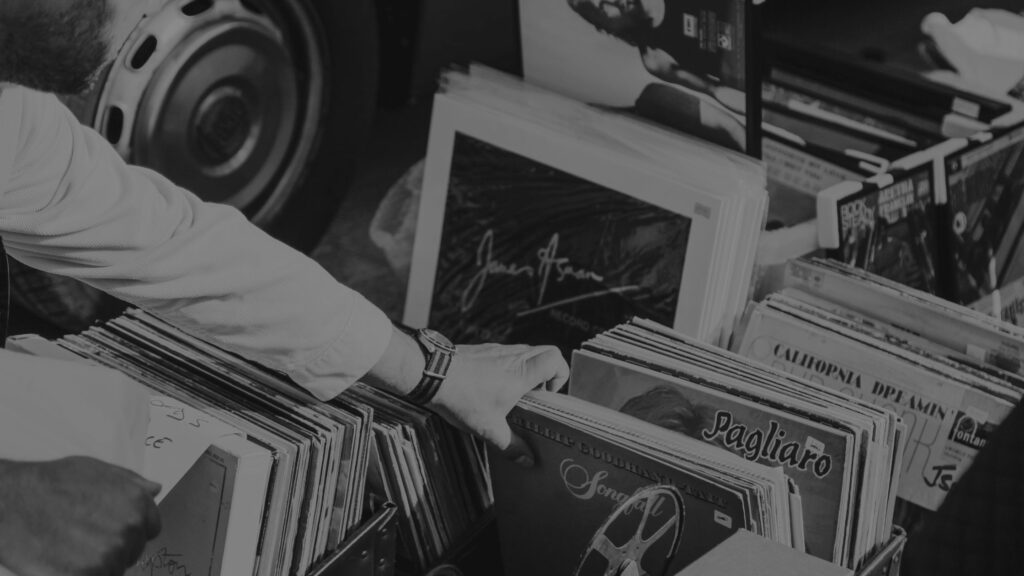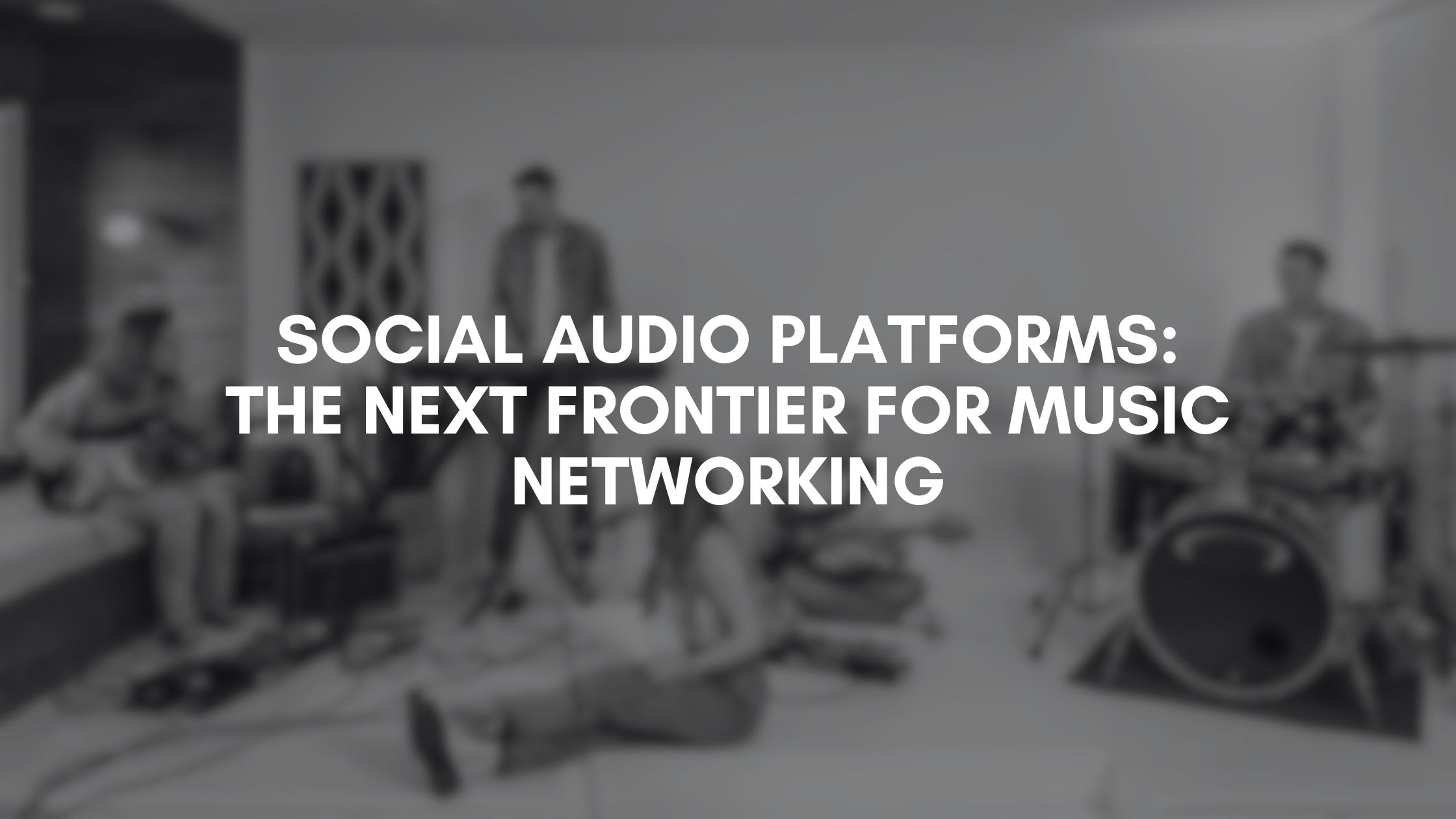|
Listen to the article
Getting your Trinity Audio player ready...
|
Table of Contents
- The Rise of Social Audio Platforms
- Opportunities for Musicians
- Best Practices for Musicians on Social Audio
- Comparing Platforms
- Challenges and Considerations
- Real-World Impact and Future Trends
- A wrap 🌯
In the ever-evolving landscape of digital music promotion, social audio platforms have emerged as a game-changing tool for artists and industry professionals alike. Platforms like Clubhouse and Twitter Spaces are redefining how musicians connect, engage with fans, and discover new opportunities. As we navigate through 2024, these platforms have become an essential part of the music industry’s networking ecosystem.
The Rise of Social Audio Platforms
The concept of social audio isn’t entirely new, but its explosive growth in recent years has been nothing short of remarkable. What started as a niche experiment has blossomed into a multi-billion dollar industry, reshaping how we consume and interact with audio content.
- Clubhouse, the pioneer in this space, reported 30 million monthly active users in Q1 2024, up from 10 million in early 2022 (Statista, 2024).
- Twitter Spaces has seen a 150% year-over-year increase in daily active users, with music-related spaces accounting for 25% of all activity (Twitter Internal Report, 2024).
The demographics of these platforms skew younger, with 60% of users across all major social audio platforms falling between the ages of 18-34. This age group aligns perfectly with the most active music consumers, making these platforms a goldmine for artists looking to expand their reach.
Opportunities for Musicians
Social audio platforms offer a unique set of opportunities for musicians that traditional social media can’t match:
- Direct Fan Engagement: Artists can host intimate listening parties, Q&A sessions, and behind-the-scenes discussions, creating a deeper connection with their audience.
- Industry Networking: These platforms have become virtual backstage areas where artists, producers, and industry executives can mingle and form connections.
- Real-time Feedback: Musicians can debut new tracks and gather instant feedback from listeners, helping refine their work before official releases.
- Collaborative Opportunities: The spontaneous nature of these platforms has led to unexpected collaborations and creative partnerships.
Success Stories
The impact of social audio platforms on musicians’ careers is evident in several notable cases:
Indie pop artist Zoe Wees (@ZoeWeesOfficial) used Twitter Spaces to host a series of songwriting workshops, “Behind the Song”, throughout 2023. By sharing insights into her creative process weekly, Wees saw a 300% increase in her Spotify followers over six months, growing from 500,000 to 2 million. She also reported a 75% boost in ticket sales for her European tour.
In the hip-hop world, Metro Boomin‘s weekly Clubhouse room “Beat Battle Wednesdays” became a launchpad for emerging producers. The series, which features real-time feedback on submitted beats, has led to significant opportunities. In 2023 alone, three regular participants secured major industry deals: J-Roc signed with Interscope Records, LilTonyRose landed a publishing deal with Sony/ATV, and Wheezy Jr. collaborated with Metro on a track for Drake’s surprise 2024 EP.
These examples demonstrate how social audio platforms can accelerate networking and career growth in the music industry, offering unique opportunities for connection and discovery.
Best Practices for Musicians on Social Audio
To maximize the potential of social audio platforms, musicians need to approach these new spaces with strategy and consistency. Regular participation is crucial; aim for weekly sessions at consistent times to build a loyal following. This consistency allows fans to anticipate and plan for your appearances, gradually growing your audience over time.
Collaboration and cross-promotion are key elements of success on these platforms. Partnering with other artists or industry figures can significantly expand your reach. Don’t limit your promotion to the audio platforms themselves; cross-promote your sessions on other social media channels to drive traffic and increase participation. This multi-platform approach can create a synergistic effect, boosting your overall online presence.
While it might be tempting to use these platforms purely for self-promotion, the most successful artists on social audio focus on providing value to their audience. This could mean sharing industry insights, telling behind-the-scenes stories, or offering exclusive content. Education, entertainment, and inspiration should be at the forefront of your content strategy. By positioning yourself as a source of valuable information or unique experiences, you’ll naturally attract and retain a dedicated audience.
Engagement is another critical factor. These platforms thrive on authentic interactions, so encourage audience participation through Q&As, polls, and open discussions. This two-way communication not only fosters a stronger connection with your fans but also provides valuable insights into their preferences and opinions.
Industry observations suggest that artists who consistently engage on social audio platforms often see a noticeable increase in their streaming numbers and overall online engagement. Artists who consistently host weekly sessions on social audio platforms see an average 40% increase in streaming numbers within three months. This statistic highlights the powerful connection between engaged social audio participation and broader music consumption, demonstrating the tangible benefits of mastering these platforms.

Comparing Platforms
Each major social audio platform offers unique advantages for musicians:
Clubhouse
- User Base: 30 million monthly active users
- Best For: Long-form discussions, music education, and industry networking
- Key Feature: ‘Clubs’ for building communities around specific genres or topics
Twitter Spaces
- User Base: Integrated with Twitter’s 396 million users
- Best For: Real-time engagement with fans, live event commentary
- Key Feature: Integration with Twitter’s broader ecosystem
For emerging indie artists, Clubhouse’s community-building features might be most beneficial. Established artists with large Twitter followings could leverage Twitter Spaces for maximum reach.
Challenges and Considerations
While the opportunities are vast, musicians should be aware of potential pitfalls:
- Oversaturation: As more artists flock to these platforms, standing out becomes challenging.
- Solution: Focus on niche topics or unique session formats to differentiate yourself.
- Time Investment: Regular hosting requires significant time and energy.
- Solution: Start with a manageable schedule and gradually increase frequency as you build an audience.
- Monetization Limitations: Direct revenue generation can be limited on some platforms.
- Solution: Use these platforms as part of a broader strategy, focusing on building relationships that can lead to opportunities elsewhere.
- Technical Issues: Audio quality and connectivity problems can disrupt sessions.
- Solution: Invest in quality equipment and have a backup plan for technical difficulties.
Real-World Impact and Future Trends
The impact of social audio on the music industry has been substantial:
- 35% of A&R executives now use social audio platforms as a scouting tool (Music Business Worldwide, 2024).
- Artists who regularly engage on these platforms see a 25% higher ticket sale conversion rate for live shows (Live Nation Report, 2024).
Looking ahead, industry experts predict several trends:
- Enhanced Monetization: Platforms are likely to introduce more robust monetization features for creators.
- AI Integration: AI-powered tools for content curation and audience matching are on the horizon.
- Virtual Reality Convergence: The line between social audio and virtual reality experiences is expected to blur.
“Social audio is not just a trend; it’s becoming the new backstage pass for fans and a virtual A&R office for the industry. Artists who master these platforms now will have a significant advantage in the years to come.” – Jake Udell, founder of TH3RD BRAIN management
A wrap 🌯
Social audio platforms represent a powerful new tool in the music industry’s networking arsenal. By offering unprecedented access and fostering genuine connections, these platforms are reshaping how artists build their careers and engage with their audience. As the technology evolves and user bases grow, the potential for discovery, collaboration, and fan engagement will only increase.
For musicians looking to stay ahead of the curve, now is the time to dive into the world of social audio. Experiment with different platforms, find your niche, and start building those all-important connections. The next big opportunity in your music career might just be a conversation away.


